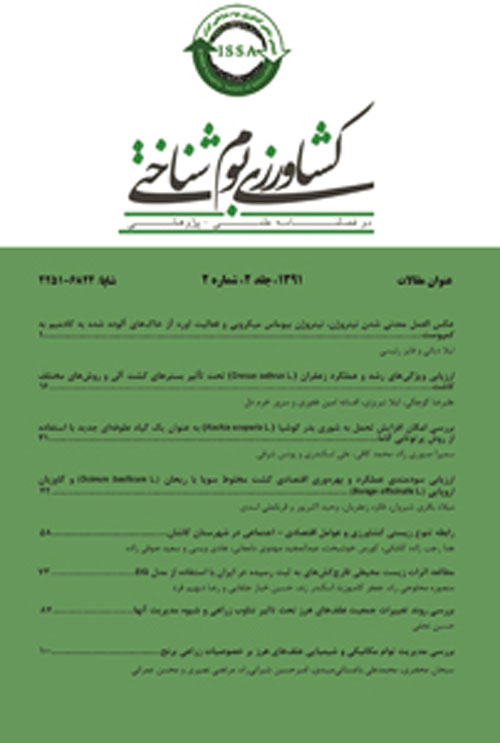Study the effects of tillage method and residue amount on yield and some traits of clover and sugarbeet
Author(s):
Abstract:
Introduction
In recent decades, a new agricultural system known as conservation agriculture was introduced to the world as a progressive solution for such challenges as soil erosion, environmental problems and the low input efficiency of energy, water and fertilizer that the conventional agriculture system is exposed to (Rolf Derpsch and Friedrich, 2009; Cavalaris and Gemtos, 2002; Romaneckas et al., 2009). In Iran, comprehensive studies covering all principles of conservation agriculture system have not been conducted. This research was undertaken in order to study the adaptation of the conservation agriculture system to the agricultural conditions of cold regions of Khorasan-Razavi Province and its effects on different crop yields to identify whether reducing tillage practice and preserving crop residue positively affect crop yield.Materials And Methods
In order to study the effects of tillage method and residue amount on crop yield, an experiment with a split plot layout based on a randomized complete block design (RCBD) with three replications was conducted at the Jolg-e-Rokh Station of Khorasan-Razavi Agricultural and Natural Resources Research and Education Centre (59°E and 35°, 50´N) during two growing seasons (2013-2014). In this experiment, tillage methods were applied in main plots at three levels, namely (1) conventional tillage (mouldboard plough 2 times disc levelling planting with seeder), (2) minimum tillage (2 times chisel packer planting with seeder) and (3) no tillage (direct planting with a notill seeder). The residue amount was in a sub plot at 3 levels, namely no residue, 2- 30% residue and 3-60% residue of the previous crop.Results And Discussion
Results showed that in Bersim clover, change in the tillage system reduced (PConclusion
It seems that the use of a no-tillage instead of a conventional tillage method, especially when preserving residue, can obtain the same or higher yield in clover and sugar beet. Keywords:
Language:
Persian
Published:
Journal of Agroecology, Volume:6 Issue: 2, 2017
Page:
101
https://www.magiran.com/p1680984


